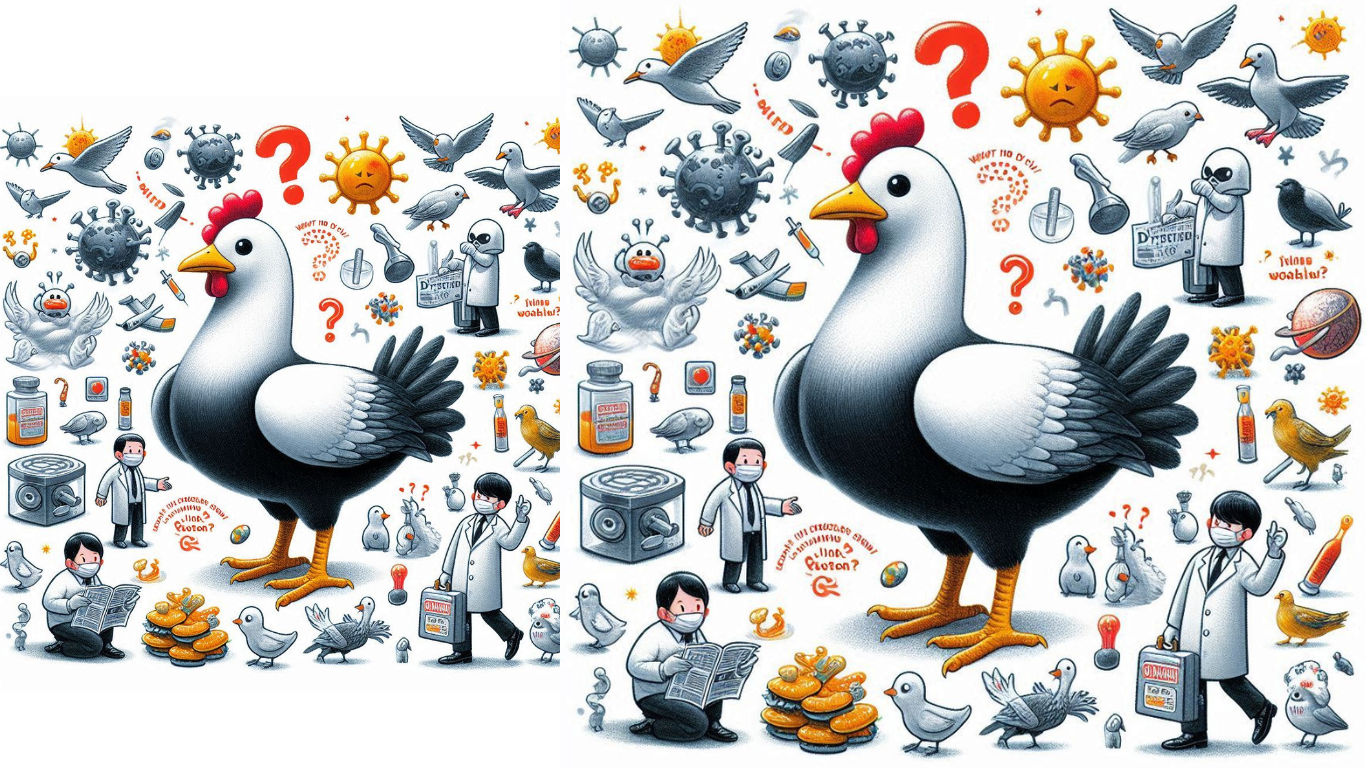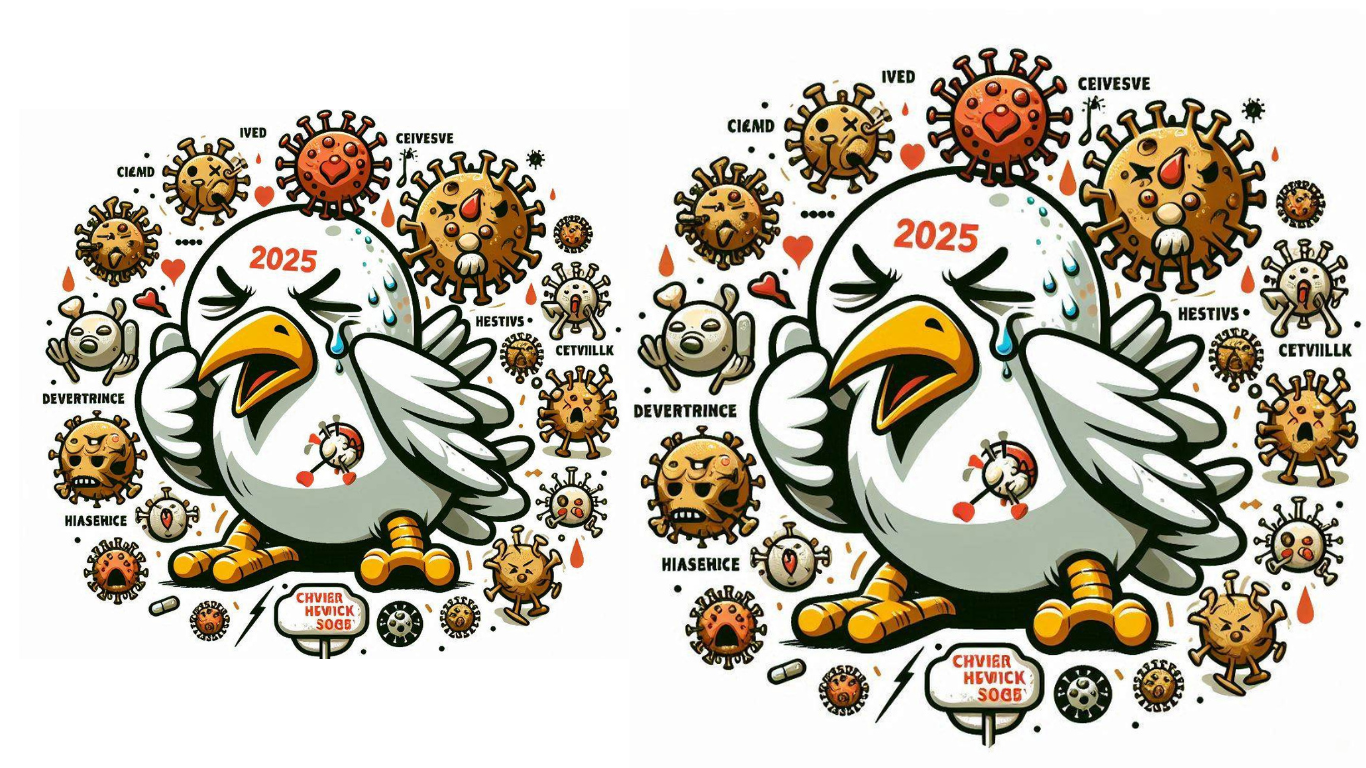Introduction
Avian influenza or bird flu continues to be an essential public health and agricultural problem in 2025. Fresh strains are breaking out, and outbreaks are also occurring in parts of the world. Knowing the state of affairs is necessary. This article aims to provide the latest information regarding bird flu in 2025, answering the most important questions concerning transmission, prevention, and its impact on humans and animals. Knowledge is power—let’s discuss bird flu in clarity and confidence.
What is Bird Flu?

Bird flu or avian influenza is an infection caused by a virus that mostly happens in birds but is transmittable to humans and other animals. The H5N1, which has very high mortality rates, is the most concerning in 2025. Previous pandemics, such as the 1997 Hong Kong and 2006 worldwide outbreaks, also set a precedent that it spreads rapidly. This is a lesson on how to deal with the present crisis.
When Did the Bird Flu Begin in 2025?
The first cases of the 2025 bird flu outbreak were diagnosed in Vietnam and Indonesia in January 2025, and they were traced to poultry farms. By March, the virus had spread so fast from migratory birds to the European continent and North America that the crisis went international by mid-spring. Comparing the 2025 strain with previous pandemics, the case underscores the absolute necessity for new vaccines together with international monitoring.
Where Did Bird Flu Originate in 2025?
The 2025 strain was most probably caused by mutations within the Southeast Asian poultry populations, whose exposure to backyard and wild bird flocks allowed for viral adaptation. Avian flu (bird flu) remains a global threat in 2025, led by the H5N8 and H5N1 subtypes, which have become more contagious among wild and domestic birds. There have been epidemics everywhere in Asia, Europe, and North America, with hotspots of interest to Chinese, Indian, and Midwestern U.S. chicken and poultry farms. Wild migratory birds, especially waterfowl, are still key vectors. Hence, Epidemiological studies attribute its spread to primary flyways. Health authorities support containment methods through culling and vaccination to curtail its spread.
Bird Flu 2025 Symptoms

In Poultry and Wild Birds:
- Sudden death
- Swollen head/comb
- Purple coloration of legs
- Decreased egg laying
- Nasal discharge and coughing
In Humans (H5N1):
- Sudden high fever (above 100.4°F)
- Sore throat and cough
- Muscle pain and weakness
- Vomiting, nausea, or diarrhea
- In extreme cases: pneumonia or respiratory complications
Bird Flu 2025 Map: Global Pandemic and Affected Areas

1. Asia:
- China and India worst hit, with millions of birds slaughtered.
- Vietnam and Indonesia confirmed cases in January 2025.
2. Europe:
- Germany, France, and the UK saw outbreaks that devastated poultry farms.
- The disease was transmitted from Asia to Europe by migrating birds by March.
3. North America:
- The U.S. Midwest is a center of infection, with major losses on commercial farms.
- There are cases in Canada and Mexico, as a result of wild bird migration.
4. Patterns and Trends:
- The virus tracks major migratory bird flyways, spreading quickly from continent to continent.
- Chicken farms in temperate, wet climates are the most susceptible.
This worldwide distribution requires global cooperation to limit the outbreak.
How Many Chickens Died from Bird Flu in 2025?
| Areas | Poultry Mortality |
|---|---|
| Asia | 80 million |
| Europe | 40 million |
| North America | 30 million |
There are huge economic losses in the poultry sector, where culling and biosecurity are followed everywhere across the globe.
Avian Bird Flu 2025: Impact on Other Animals
Bird flu infection in mammals like seals, foxes, and cats has been found, and this concern is in cross-species transmission and wildlife conservation and animal health locally.
Eggs and Bird Flu 2025: Safety and Supply Concerns
The risk of egg transmission of bird flu is minimal in 2025 since the virus is transmitted by contact with the sick bird and not through well-cooked eggs. Public health authorities reiterate that proper egg cooking (to the hardness of yolks) kills the virus. Sanitation and inspection processes in infested regions undergo rigorous testing and sanitation processes. Risk avoidance
- Do not use dirty or cracked eggs.
- Wash your hands as soon as possible after coming into contact with raw eggs.
- Refrigerate eggs.
Commercial egg farms carry out rigorous testing and sanitation measures. Although uncommon, surface contamination may take place, and hygiene is therefore necessary. WHO reported no raw/undercooked egg consumption in an outbreak.
Preventative Measures and Public Health Guidelines
On Farms:
- Biosecurity: Isolate poultry from free-range wild birds, disinfect, and utilize protective equipment.
- Surveillance: Test flocks and monitor free-ranging bird communities.
- Culling: Cull infected/in-contact birds humanely to break outbreaks.
Public Guidelines
- Stay away from sick/dead birds.
- Report dead birds to the authorities.
- Heat chicken/eggs to 165°F (74°C).
Global measures include pilot testing of poultry vaccines and migratory traffic management. Keeping oneself up-to-date with sound health news.
Conclusion:
Bird flu in 2025 remains a live issue with outbreaks among birds and wildfowl around the globe. It is important to know about the symptoms, mode of transmission, and the methods of prevention to guarantee safety to the population. The government is also actively keeping a check on culling and biosecurity operations. Remaining aligned with the WHO and CDC keeps updates and recommendations available promptly. For all the problems, studies and worldwide cooperation are attempting to reduce the transmission to the bare minimum. Remaining vigilant and observing precautions, all of us can combat this scourge and protect human as well as animal health.
FAQs on Bird Flu 2025
- Q: Can bird flu be transmitted to humans?
A: Yes, but not often. Contact with birds exposes you to the risk.
- Q: Is it right to eat affected eggs when there is an outbreak of bird flu?
A: Yes, if they are properly cooked to kill any virus that they may have.
- Q: What should I do if I find a dead bird?
A: You should inform local health or wildlife officials.


Windows 7 Slic Activation
Windows Activation Motherboard Change
Windows Activation Watermark Regedit
Windows Activation Windows Powershell
Windows Activation Disable
Windows Activation